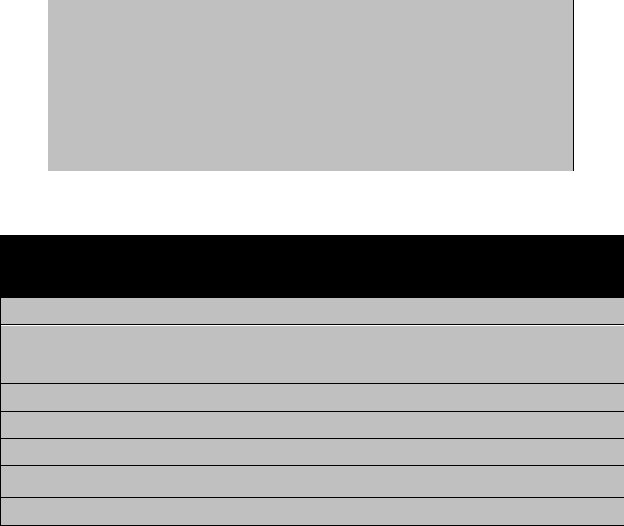
U.S. Army Corps of Engineers
Improper Payments Elimination and Recovery Act
Commercial Payment Sampling Methodology
(February 2014)
Purpose: This document is to provide background methodology, and other considerations used
in the calculation of the U.S. Army Corps of Engineers (USACE) fiscal years (FY) 2014 and
2015 sampling plan for commercial payments. Our computations are made in accordance with
the Improper Payments Information Act (IPIA) of 2002 as amended by the Improper Payments
Elimination and Recovery Act (IPERA) of 2010 as amended by the Improper Payments
Elimination and Recovery Improvement Act (IPERIA) of 2012. This plan provides identification
of sampling processes used by the USACE in support of these laws. In accordance with
Appendix C of OMB Circular A-123, “All programs and activities susceptible to improper
payments will ensure that their sampling methodologies are approved by OMB prior to
conducting its sampling measurement.” This document is in support of our requested Office of
Management and Budget (OMB) approval of the of the USACE sampling plan.
References:
Improper Payments Information Act (IPIA) of 2002;
Improper Payments Elimination and Recovery Act (IPERA) of 2010;
Improper Payments Elimination and Recovery Improvement Act (IPERIA)of 2012;
OMB Circular A-123, Management’s Responsibility for Internal Controls, Appendix C;
Requirements for Effective measurement and Remediation of Improper Payments;
OMB memorandum M-11-16, Issuance of Revised Parts I and II to Appendix C of OMB
Circular A-123
DoD Financial Management Regulation, 7000.14-R, volume 4, chapter 14, Improper
Payments.
Background: Beginning in FY 2006, OMB determined that all DOD payments are susceptible
to the risk of error based on the large volume of transactions and the high dollar amounts of
annual disbursements. The USACE Finance Center (UFC), Directorate of Finance located in
Millington TN, serves as the USACE office of primary responsibility for the USACE reporting
of improper payments and compliance with the above cited references. The USACE assessment
of commercial payments addresses the effectiveness of internal controls, such as pre-payment
reviews, to prevent improper payments as well as any system weaknesses identified internally or
by outside audit activities. This plan also supports existing post-payment review sampling and
review plans and procedures being utilized for internal management control or Certifying Officer
Legislation requirements The Corps of Engineers Financial Management System (CEFMS)
provides internal system standards that adhere to U.S. Generally Accepted Accounting Principles

as well as process controls, providing the process safeguards to monitor and ensure that pre-
payment examination requirements are met.
The UFC monitors changes in programs. Root causes of errors by type and category (systemic
or personnel) are recorded and used for tracking trends and implementing corrective actions.
The UFC will continue to focus on the prevention of improper payments through systemic and
process controls and post-payment activities. Data gathered through the improper payment
program to include the statistical sample is used in preparing reports and balanced scorecard
metrics for applicable activities and the Office of the Under Secretary of Defense (Comptroller).
In FY2009 USACE began reporting commercial pay improper payments.
Commercial Payments
Universe Identification: Using prescribed guidance, USACE identified the universe of
commercial payments processed through CEFMS – the sole source of financial data for USACE.
Though there are 60 CEFMS databases utilized by Corps Headquarters, 9 Division offices, 38
District offices and multiple centers, all payments are disbursed through the USACE Finance
Center (UFC). The population is taken from the CEFMS check register table. The CEFMS
check register table contains all check/EFT disbursements made by the UFC. The IPERIA
samples are drawn from the entire universe of USACE commercial payments excluding
transactions based on payments to the government purchase card (GPC) program provider. No
other transactions that could be considered/justified through a documented risk assessment have
been excluded. The following table represents the total annual and average monthly commercial
payments made in FY13
Table 1: CEFMS Universe of Commercial Payments for FY2013
CEFMS
Disbursements
Total Payment
Amount
Total
Payment
Count
Average Monthly
Payment
Amount
Average
Monthly
Payment
Count
Total
21,751,851,541.07
387,563
1,812,654,295.09
32,297
USACE’s Sample Design: The UFC uses a simple random sample plan as a part of the
comprehensive pre/post payment audit process. The purpose of the sampling plan is to estimate
the percentage of commercial payments in error as well as providing sample statistics on the
dollar value of over and under payments (improper payments) for use in annual IPERIA
reporting. The sampling plan presented provides population estimates and applicable confidence
intervals within specified sampling probability (95%) and precision levels (+/- 2.5%) of the
percentage of commercial payments in error. The sampling plan (95% +/-2.5%) exceeds OMB’s

statistical probably and precision standards (90%, +/- 3%) and assumes an occurrence rate of 50
percent for maximum sample coverage as suggested in OMB circular A-123, Appendix C.
Additionally, the sample plan is just one of the methods used by the UFC to collect data on over
and under payments.
Sample Size: Per OMB’s guidance, the required sample size for each universe is based on a
higher projected error rate (50% for maximum sample coverage) due to risk factors and the large
dollar amount of annual outlays for commercial payments. The sample size is determined using
an estimated minimum number of commercial payments expected to be processed in a year of
374,400. The reduction in the size of the universe is to ensure the sample interval will result in
an adequate sample size, regardless of the actual final size of the universe. The 374,400 universe
results in an estimated sample size of 1537 and a sample interval of 244. As the sample interval
remains the same throughout the year and the actual population is in excess of the minimum
estimate, the actual sample size is larger than the required 1,537 items The sampling plan reflects
a minimum monthly sample size of 128 payments. Based on FY13 data, the target monthly
sample is 132 (1,584 annually) which will yield a statistically valid estimate of improper
payments that exceeds OMB requirements.
The formula used to determine the sample size is:
Formula:
sample approximation (n
o
) = z
2
*P
h
*Q
h
/d
2
sample size (n)= n
o
/(1+(n
0
-1)/N)
Reference: Cochran, W.G., Sampling Techniques
(3rd Ed),
John Wiley & Sons, New York: 1977
Total Universe Size (1)
Nh
374,400
Occurrence Rate (2)
Ph
0.5000
One minus occurrence rate
Qh
0.5000
Precision level
d
0.0250
Confidence level
a
0.9500
1.96
Sample approximation
1536.64
Sample size
1530
Sampling fraction
0.41%

Payment Selection: Selection of payments for random review is performed using a table of
random numbers to begin the fiscal year. The interval is completed and carried over from month
to month. Example: With an interval of 244, if the last item sampled in January was 33,900 and
the total number of payments in January was 34,000; the first line sampled in February would be
number 144 (100 carried over from January plus the first 144 in February resulting in a sample
interval of 244).
Treatment of Missing Payments: It is unlikely that a sampled payment would not be available
for review (i.e., missing documentation), however, if this were to occur, the Deputy Director of
Finance would be notified and actions initiated to determine the cause and provide a solution.
The impact of missing records (no data) influences the precision of the sample statistic as an
estimator of the population proportion of records in error, dollar value of over and under
payments and dollar value of the overall sample. As such, bias can become a factor in the
sample statistic as a population estimator. There are a number of methods available to address
missing records, but the most appropriate will depend upon the circumstances surrounding
number and type of missing records. The Deputy Director of Finance will determine the best
approach to address missing records.
Completing the Target Sample: For reporting purposes, any monthly sample that is not
complete by the given report cutoff date due to missing documentation will be treated as an
overpayment per IPERIA for that month’s report. When subsequently reviewed, these
overpayments will be reconciled with actual review results. This action will seek to prevent any
known biased population estimates due to sampling methods.
Improper Payment Estimation: The samples are drawn to estimate the percentage of paid
invoices in error and to estimate the dollar value of improper over and under payments using
auxiliary data captured from the sample for annual IPERA reporting. Improper payment
estimates are calculated as the gross total of both under and over payment estimates.
The pay account error rates are estimated by
where N = total population of accounts
n= sample size
= error rate
= i
th
sample payment improper indicator (1 if improper, 0 else)

The approximate 95% confidence interval is
The program improper payment estimates are calculated by
where = total payment amount
= i
th
sample payment amount
= i
th
sample payment improper amount
N = total population
n = sample size
The improper payment estimates are calculated as the gross total of both under and over payment
estimates. The program improper payment rate is the estimated improper payment total (
)
divided by the total universe of payments (X).
The estimated variance for the program improper payment estimate is calculated as
where N= total population
n= sample size
= i
th
sample payment amount
= i
th
sample payment improper amount
The confidence interval is
Historically, the standard error and confidence interval around the estimated improper payment
dollar amount were not a required reporting element and were not calculated. These values will
be considered with future sampling plans and reviews.
